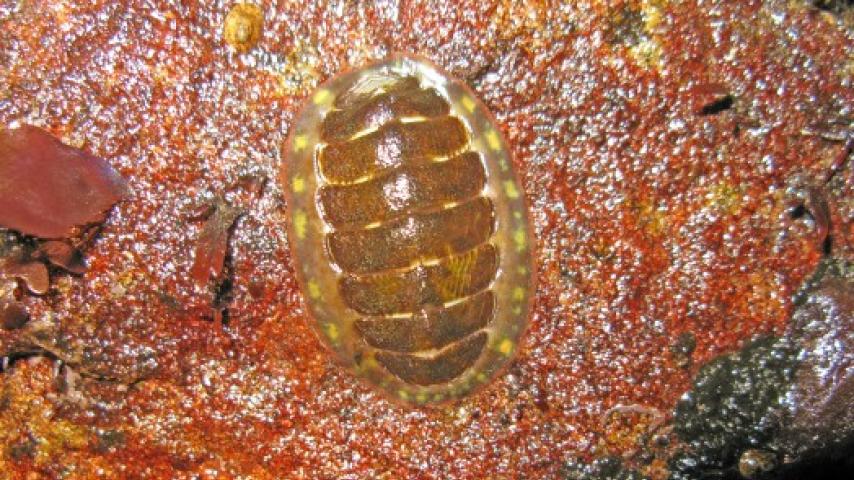Lined Chiton (Tonicella lineata)
The Lined Chiton is a characteristic species of the Pacific Northwest intertidal zone, from southern Alaska to southern California; it is also found subtidally to depths of 90 m.

KINGDOM Animalia - PHYLUM Mollusca - CLASS Polyplacophora - ORDER Chitonida - FAMILY Mopaliidae
The varied colors of these mollusks—blue to red to brown to yellow or orange—camouflage them on the varied substrates provided by rocks with coralline algae growing on them. The name comes from conspicuous diagonal lines across the plates. The exposed mantle along the edge of the plates has pale spots, and this color-pattern combination makes the species easy to distinguish from other chitons found in the same habitat.
These chitons, typically 25-50 mm in length, crawl very slowly on the rocks on a broad foot, grazing on coralline algae with a rasping radula, typical molluscan mouthparts. Respiration takes place through gills (ctenidia) located in a groove running around the edge of the mantle. The water that runs past the gills also carries feces away from the anus located at the posterior end.
When exposed by low tides, the chitons respire at a lower rate and probably suffer an oxygen debt, to be repaid as the ocean returns. When dislodged from their substrate, they roll into a ball, presumably to protect their soft underside from predation. Their primary predators are large sea stars such as Pisaster and Leptasterias, but some vertebrates (Northern Clingfish, Harlequin Ducks, Sea Otters) also take many of them. They are often found in beds of Purple Sea Urchins, presumably better protected there from their predators.
Eggs are laid in spring and hatch after a few days into trochophore larvae, a nonfeeding stage that remains in the plankton while living off its yolk sac before settling. The larvae are apparently induced to settle and metamorphose on rocks with coralline algae, and they begin grazing after a few days.